Two friends open up on their surrogate journey and why its growing popularity in Australia
After 18 failed IVF rounds Lisa Messenger thought she would never become a mother. Now her best friend is carrying her child as part of a growing movement of surrogacy in Australia.
VWeekend
Don't miss out on the headlines from VWeekend. Followed categories will be added to My News.
The first time Lisa Messenger felt her baby kick brought tears to her eyes – and those of her best friend Sarah Megginson, the woman growing the longed-for baby for her dear friend.
It was fortuitous timing. The women – Messenger from Bangalow, inland of Byron Bay, and Megginson from Robina on the Gold Coast – were in Sydney for this interview when the baby kicked, so his mum was there to feel it for the first time.
“Oh my gosh I felt it – I felt my baby kick,” Messenger squealed, her hand clutching Megginson’s tummy proudly. Both were in tears.
“I’m never letting go,” she declared.
Their bond – a palpable one – was born from a debilitating infertility journey. Messenger and her husband Stevan Premutico had 16 unsuccessful attempts at IVF over their eight-year, seemingly impossible, quest for a baby. Two miscarriages. More than 480 needles.
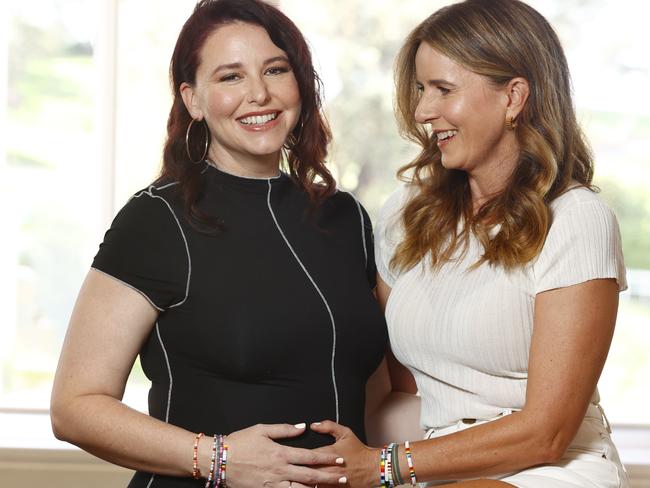
At one stage, Messenger was taking 90 tablets a day – before her friend, colleague and confidante brought up the prospect of surrogacy.
The friends are part of a growing movement of surrogacy in Australia – which is altruistic, as surrogates cannot be paid – with recent figures showing that 75 per cent are done for people known to them.
They cry together a lot, I’m told. And deservedly so. Getting here hasn’t been easy. But in August, when that baby boy is in her mother’s arms, it will all be worth it.
“For me, I almost had to go through my own stages of grieving – even from IVF and it’s not conceived naturally – like our baby’s coming out of a test tube or whatever, to now I’m not actually carrying my own baby,” an emotional Messenger explains. “I had to go through so many steps to get there in the first place to be comfortable with that. So it probably didn’t even occur to me for years that I would ever need to ask someone. But looking back, I probably would have almost felt, as a people pleaser, guilty, or it was too much of a burden to ask someone to do that for us.
“Knowing what I know now – we still have frozen embryos – now I’d get on stage like, ‘Right, four more, who’s up for it?’ Let’s manifest it,” she laughs. According to IVF Australia, one in six Australian couples experiences infertility.
MEDICARE REFORM NEEDED
Less than 120 surrogates gave birth locally last year – while more than double the amount of intending parents went overseas to find their birth mothers. Every state and territory has its own laws and requirements, with experts saying Medicare reform is needed, as well as an overhaul of the system which should see surrogates paid at least something for their time.
Messenger and Megginson met 12 and a half years ago, when Megginson had just had her first child. She now has three and, with her family complete, offered to help start Messenger’s family five years ago.
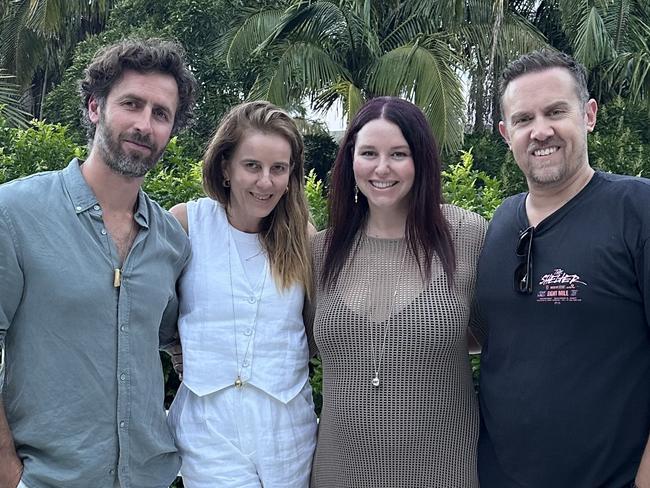
They were having a business meeting, but Megginson’s babysitter fell through. “Sarah actually reminded me recently that I said, ‘I love babies – bring her along’,” Messenger, founder and editor of multimedia brand Collective Hub, says.
“Sarah (a journalist) has been editing a lot of my personal books over the years – so I’ve written 36 books or something ridiculous now … so we’ve worked together for years.
“And the most bizarre thing is in 2018, Sarah and I had a coffee, and I was in the infancy of my IVF journey to a degree – and Sarah said out of the blue, ‘If you ever want a surrogate, I would love to carry a baby for you’.”
Megginson – whose husband is veteran radio host David “Christo” Christopher from Hot Tomato – remembers the moment well.
“We were talking about IVF and how she was just starting her journey and I had said, ‘Oh, if that doesn’t work out and you need a surrogate, I’m your girl’ kind of thing,” she says, smiling.
“But it was very early – she had only done two rounds then.
“Looking back, it was an amazing moment of serendipity, that the very first time we met, which was for a business meeting, we had a baby,” she laughs.
But Messenger was still on her journey, and after Megginson’soffer did 16 rounds of IVF. Before then, in 2015, she had fallen pregnant to a previous partner but miscarried.
“That was the first time I went, ‘Oh, this pregnancy thing – wow, I should stop being so focused on my career, I really want a baby,’” the author, speaker and entrepreneur says.
“That relationship didn’t work out and later that year I went to Bali and on my birthday, I was like, ‘I just want to go and hug babies’.” She went to an orphanage in Bali and a little baby Gracie stole her heart. “I ended up spending three days with her on a mattress before trying to adopt her,” she continues.
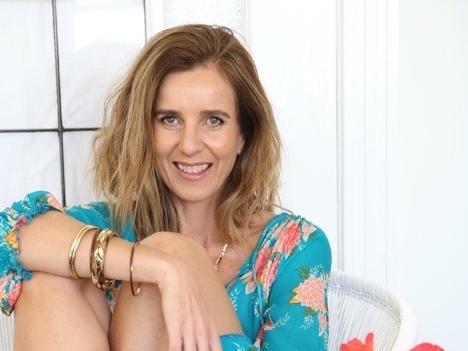
“And that was almost impossible, I was still single, so I then decided, which was kind of courageous and this is how much I wanted a baby, but I did two rounds of IVF using donor sperm.
“And then I met the now love of my life, Stevan, and we’ve been together for six and a half years – and it was fairly early on that we were like, yes, we both want to have children, so we tried naturally for six months and then we were like, let’s do IVF.
“So we then continued to do 16 rounds of IVF. To put that in perspective I used to have a massive fear of needles, and I think I worked out I’ve probably injected myself about 480 times over the 16 rounds of IVF.
“It was a lot. And it wasn’t until round 16 that I did an infamous crying video one day because I had just had enough – and I kind of didn’t really mean to, it was in the moment and I put the camera up on Instagram and was like, ‘It’s just been excruciating’.”
The video showed a very raw and real Messenger. Frustrated. Devastated. It attracted thousands of messages from women with their own stories. “That’s when I realised what a huge issue this is,” Messenger says.
BEAUTY AMID THE CHAOS
In March last year, floods ravaged the Northern Rivers region that Messenger and Premutico call home, and she set about trying to help others. “One of my big things in life is I jump into a crisis, so I decided to help set up evacuation centres and just crazy stuff – and this is where the story gets beautiful amid chaos,” she says.
“A lot of media were interviewing me to see how people could help – and one of those people was Sarah’s husband, David, who is a radio host on the Gold Coast – but I didn’t know that.

“So I did the interview with David and his co- host and then Sarah texted me after and said, ‘You were just on the radio with my hubby – how’s the IVF going?’
“And I was like, ‘Not great – still want to be a surrogate?’,” she says. They laugh, because Megginson’s immediate response was, ‘Yep let’s do it. Let’s bring a baby into the world.’
“And I think because I was so vulnerable at the time and I had so much high adrenaline and so much life and death around me, I was like, ‘Oh, I just don’t care. I’m at my lowest, I’m trying to help other people – I’m just gonna ask’,” Messenger says. “I think one of the biggest lessons you can take is being vulnerable enough to ask. We’ve since learned that there are so many people who love carrying babies and they would love to carry someone else’s child – but they are conversations never had.
“And there are so many people like me who went through so much to try and conceive … so this is really the greatest love story ever – sorry Stevan – because now, I couldn’t even imagine a more beautiful or more perfect way to bring this baby boy into the world.”
THIS IS HEAVEN
Megginson got the all-clear from her doctor,and her husband, and they went through all the required counselling, drew up necessary legal contracts and fell pregnant on their second round of IVF. “There’s a lot of moving parts to it – physically, legally, emotionally, financially – and because in Australia, surrogacy is just this black hole of information, because it’s not a commercial thing like it is in America, it’s hard to get the information as you’re going,” Megginson says.
“But my husband and I had a very easy fertility journey, and I had always been interested in (surrogacy), and because I’m a journalist, I was fascinated by this idea that fertility is a shitshow.’’
Today, they are 29 weeks pregnant. The baby is due in the first week of August. For Messenger, this time in her life is her happy place. After eight years of disappointments, she is allowing herself to be happy.

“For me, after eight years of trying for a child – this has been heaven, and such a beautiful process,” she says, through tears.
Along with the emotional and physical strain of IVF, comes a financial one.
“So we ended up selling our house last year, and Stevan made a really good point – he said to me, ‘If we really want a child more than anything in the world, it doesn’t matter if we spend $1 or a million dollars.’ For us, we really re-prioritised and we were like, ‘Let’s put everything into it’,” Messenger says.
“And we understand a lot of people can’t even afford one round of IVF so we feel very fortunate that we’ve been able to do that – but also we’ve made whatever sacrifices we could to keep doing it. So for me, doing this surrogacy with Sarah, it’s like doing it with my best friend now and we’ve become so much closer.
“As Stevan says, Sarah and I finish each other’s sentences, and we’re texting or calling like all day every day, it’s amazing.
“When Stevan met Sarah he said, ‘She’s an angel, she’s a goddess, how does someone exist like this? I have faith in humanity again because of Sarah.’ So we have this amazing little boy growing, but also our friendship has grown, and we’ve been able to impact and I think inspire so many more people, and also open people up to possibility.
“And the biggest thing for me, which I kind of live my whole life by anyway – is let go and surrender to the way that you thought something was going to happen.
“If you are courageous enough to say, ‘This is what I want’, it’s amazing to see who comes out of your community and actually wants to support you and I think that’s one of the greatest lessons and gifts that we have both been astonished by.
“Sarah and I seriously do finish each other’s sentences, we’re so in love, and in sync.”
For Megginson, the feeling is mutual.
“So many people say to me, ‘It’s such a lovely thing you’re doing’ and I really appreciate that – but I am getting something out of this as well,” she says. “To be part of this final piece of their puzzle, to help them get their family is just … I’ll get teary.
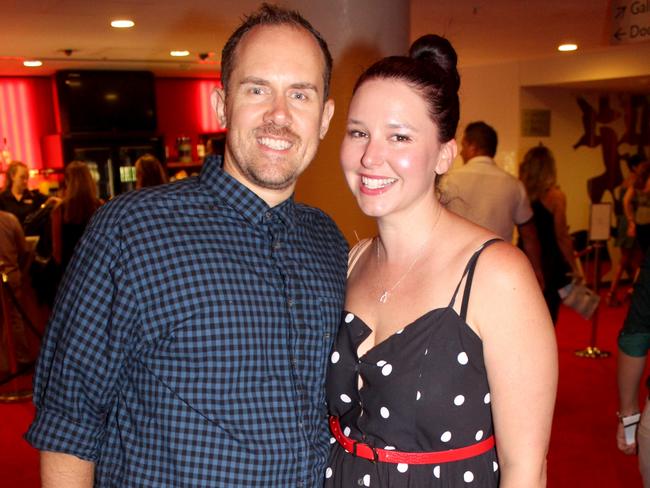
“There was no part of me that was pining for another child, so I think that’s super important … but as well as that, he’s just never felt like my baby. There’s just no part of me that is connected to him as a mother – although I feel very protective of him as an aunty.”
Megginson’s own three children (two girls and a boy) have also been involved every step of the way – her 12 year old even went to the implantation.
“So they have been fully aware and it’s been amazing the questions they asked. They asked me what is he to them? ‘Because he’s growing in your tummy, but Lisa’s not family – but is he family?’” she says. “And we have this concept of chosen family, so I was like, ‘He’ll be your chosen cousin, he will always be family’.”
SURROGACY GROWING IN AUSTRALIA
Surrogacy and donor-conception lawyer SarahJefford says surrogacy in Australia is growing slowly but surely, and if it was commercial instead of altruistic, it would open it up more.
“Even 10 years ago, there were probably only 30 or 40 surrogacy births per year, probably less than that, and now it’s up to 110,” says Jefford, who was awarded the Medal of the Order of Australia this year for her work with the surrogacy community, and has published More Than Just a Baby: A Guide to Surrogacy for Intended Parents and Surrogates.
“So it’s still very low, but it is increasing, and around another 250 children were born overseas by surrogate,” she says.
After having two children with partner Troy, the IVF mum herself wanted to give back, later becoming an egg donor and a surrogate, giving birth to a baby in 2018 for two dads who she met on the Australian surrogacy community on Facebook. “The baby’s not a baby anymore, she’s five – and it’s pretty amazing, but I also feel like I got the best deal as well,” Jefford says.
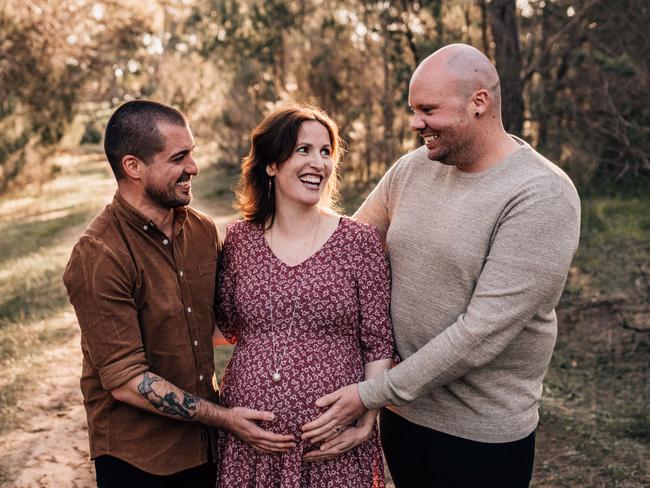
“Obviously they get their baby and that’s amazing for them – and that’s the question: is it really altruistic if I also gained from it too? I didn’t gain money, but I get to see them meet their new daughter. I get to see them parenting her and we have an ongoing relationship, which is pretty amazing, so I still feel like I was a big winner out of the whole thing because it was just the best experience in the world. It’s one of the best things I’ve ever done.
“I certainly saw it as a rebalancing of the scales – I’d had a lot of luck in my favour. I could do pregnancy, I knew other people couldn’t do that.”
Jefford says the number of prospective parents and surrogates contacting her for legal services has “blown up” in recent years.
“Last year I had 120 surrogacy arrangements within Australia, and I saw another 110 intended parents who may have gone overseas, but you never really know,” she says.
“So over the period of 2021 and 2022, I saw 260 surrogacy arrangements within Australia that started the process.”
She says marriage equality has made the process easier for gay couples – except in WA where surrogacy is still banned for homosexual couples – with the 2017 decision making it easier for them to be recognised as a family.
“But there are still some barriers to doing it here, which is why so many people go overseas,” Jefford says. “Here, you have to be very careful if you’re advertising for a surrogate, there are restrictions on doing that in each state. So putting it up, even on Facebook, to say, ‘Hey, we’re looking for a surrogate’, you could potentially be breaking the law. And also because it’s altruistic, that really limits the number of women that are willing to do it – they can have their expenses covered, but it is a pretty big thing to do without any sort of financial compensation.”

She says even though beautiful stories like her own surrogacy experience were in the majority, some cases did go wrong. “Most of them do pretty well unlike regular couples that have children, surrogacy arrangements have to go through a whole lot of psych assessments and counselling and legal advice before they think about it – so by the time they’re pregnant, they’ve already thought about what they’re doing quite a lot.
“The challenges will come when there’s maybe mismatched expectations about the relationship that they’re meant to have or how much the intended parents will be there to support the surrogate when she’s unwell or tired or heavily pregnant.” Out of the 260 surrogate births she has helped families with over the past few years, 75 per cent were existing relationships – like Messenger and Megginson.
One way to make surrogacy more feasible for couples in Australia is for a uniform national law across the whole country, she says.
“Another potential for change is that we compensate surrogates for their time and effort – and not necessarily where they get paid in exchange for the baby. It’s more about paying them – a bit like having a job – so it might be a capped amount they receive over the course of their pregnancy. That would encourage more women to think about doing it and destigmatise surrogacy. We could also make some of those steps a lot easier, for example, by putting the intended parents on their birth certificate straight after the birth, because currently the surrogate will initially be named on the birth certificate, and then the dads need to apply for a parentage order to be recognised as the child’s parents, which is all unnecessary.”
Adelaide-based Anna McKie from Surrogacy Australia agrees, and adds that Medicare reform is also needed. Her own research from surrogates revealed that they wanted to have easy access to ongoing counselling.
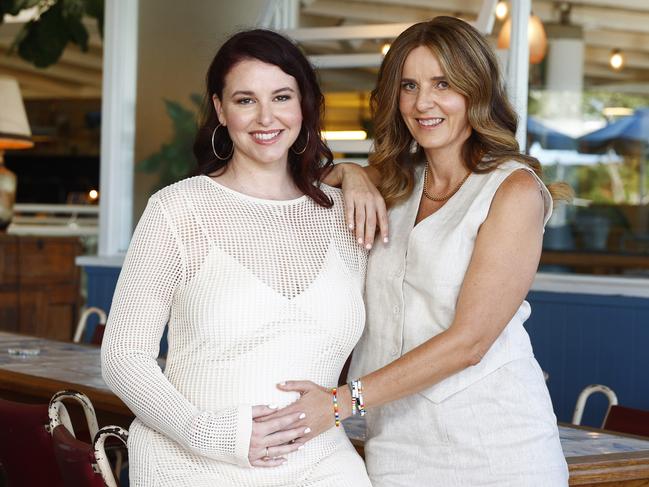
“You legally only have to have counselling in the lead-up to getting pregnant – but once you’re pregnant as a surrogate, it’s a very complex dynamic because you’re having a baby with other people and it’s not your baby, but they need to support you,” says McKie, who has also been a surrogate herself. The mother of two, a maths teacher, also donated her eggs three times before being a surrogate for dads she met through a Facebook group.
McKie says emotional issues can pop up at certain times for surrogates – Mother’s Day or the child’s birthday – and that while it is worth investigating, a commercial surrogacy model may not be the answer.
“I don’t think we want a commercial model,” she says. “But intended parents go overseas for surrogacy every year when they could stay here, so clearly there’s a need for it. And I do wonder if there was a bit of structure in place, would more women step forward and consider being surrogates?
“Another reform that is needed is the Medicare rebates, getting them for the IVF procedures and the egg collection. So this is the discrimination here – if you’re a (non-surrogate) couple and you need to do an egg collection to have your own baby, you get Medicare rebates.”
McKie’s organisation hosts monthly Zoom meetings and most groups hold their own local catch ups. She says her data gathering, taken from intended parents, found that surrogacy cost between $35,000 and $90,000, with an average of $60,000 out of pocket.
“It’s a middle class luxury to do surrogacy – and there’s no guarantee that there will be a baby at the end.”
More Coverage
Originally published as Two friends open up on their surrogate journey and why its growing popularity in Australia





